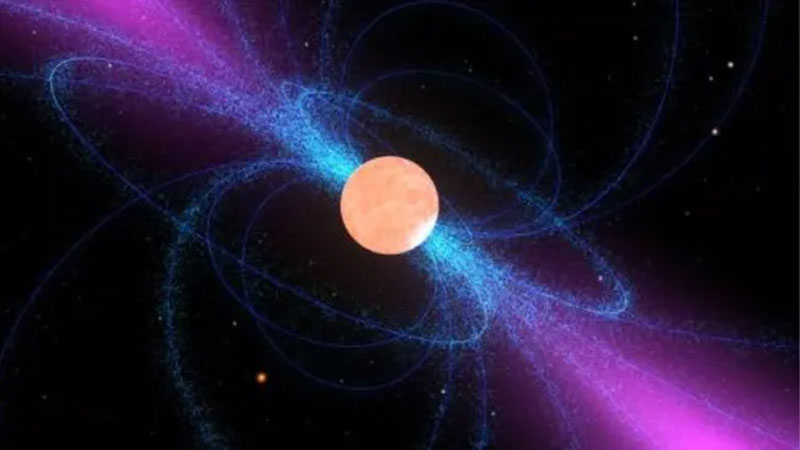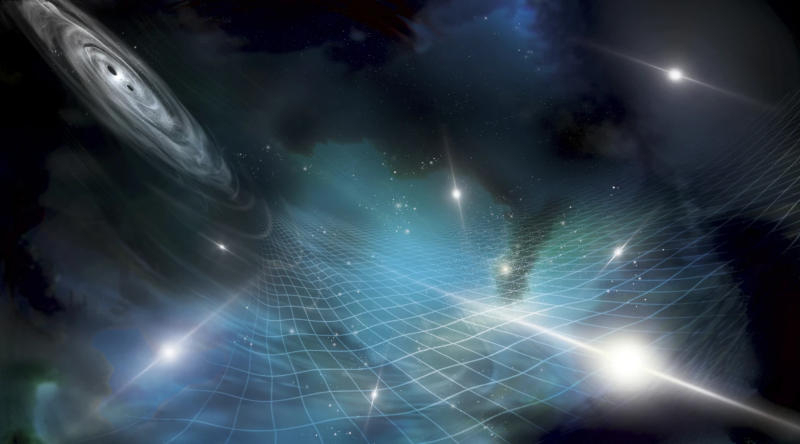Dark matter manifests itself only in gravitational interactions, which makes it invisible in the electromagnetic spectrum. Is it possible to unlock its secrets without obtaining data about the dark matter directly? Pulsars can help with this, scientists are sure. Radio wave pulses from these natural clocks propagate along the curvature of space-time and respond to gravitational disturbances from clumps of dark matter.

Artistic representation of a pulsar. Image source: NASA Goddard/Walt Feimer
Researchers from the University of Notre Dame (USA) studied 65 pulsars from the Parkes Pulsar Timing Array catalog, data from which is collected by the radio observatory of the same name in Australia. The idea was that the curvature of space-time under the influence of a clump of dark matter would introduce a delay in the radio pulse of any pulsar. We can measure this delay of a few nanoseconds using atomic clocks on Earth and collected data from pulsars, which serve as beacons in the Universe and are unimaginably accurate on our time scale.
Pulsars are neutron stars, the cores of dead massive stars, many times larger than our Sun. If, during axial rotation, they direct the poles towards the Earth, then we detect a radio pulse from the release of energy. Masses of matter in the path of radio pulses – ordinary and dark – bend space-time and make the path of the radio beam longer, as if it were moving not in a straight line, but along a roundabout path. There is a delay in the arrival of the impulse, which makes it possible to judge the mass that caused the disturbance of space-time. And if in that place in space there is no visible object, for example, a star or a cluster of stars, then invisible dark matter may be hiding there.
In data from 65 pulsars, the scientists found 12 encouraging anomalies that pointed to changes and time delays in pulsars previously detected by the radio telescope. The Earth, the Sun and pulsars are obviously constantly moving in space, creating more and more new conditions for observations. All changes in the duration of pulsar pulses create an image of space-time between these objects, which scientists are trying to decipher.

Visualization of gravitational waves produced by supermassive black holes. Image source: nanograv.org
This work also has another meaning. About a year ago, the registration of low-frequency gravitational waves – a kind of ripples of space-time in the Universe – was confirmed for the first time. It’s almost like a lattice of space-time, which, like the cosmic microwave background radiation, can provide information about processes shortly after the Big Bang and later. Data on the delays of pulsar signals could help eliminate gravitational noise—the interfering effect of dark matter on these ripples—which would improve the accuracy of measurements of other phenomena, such as black hole mergers at the dawn of the Universe and processes involving primordial black holes.